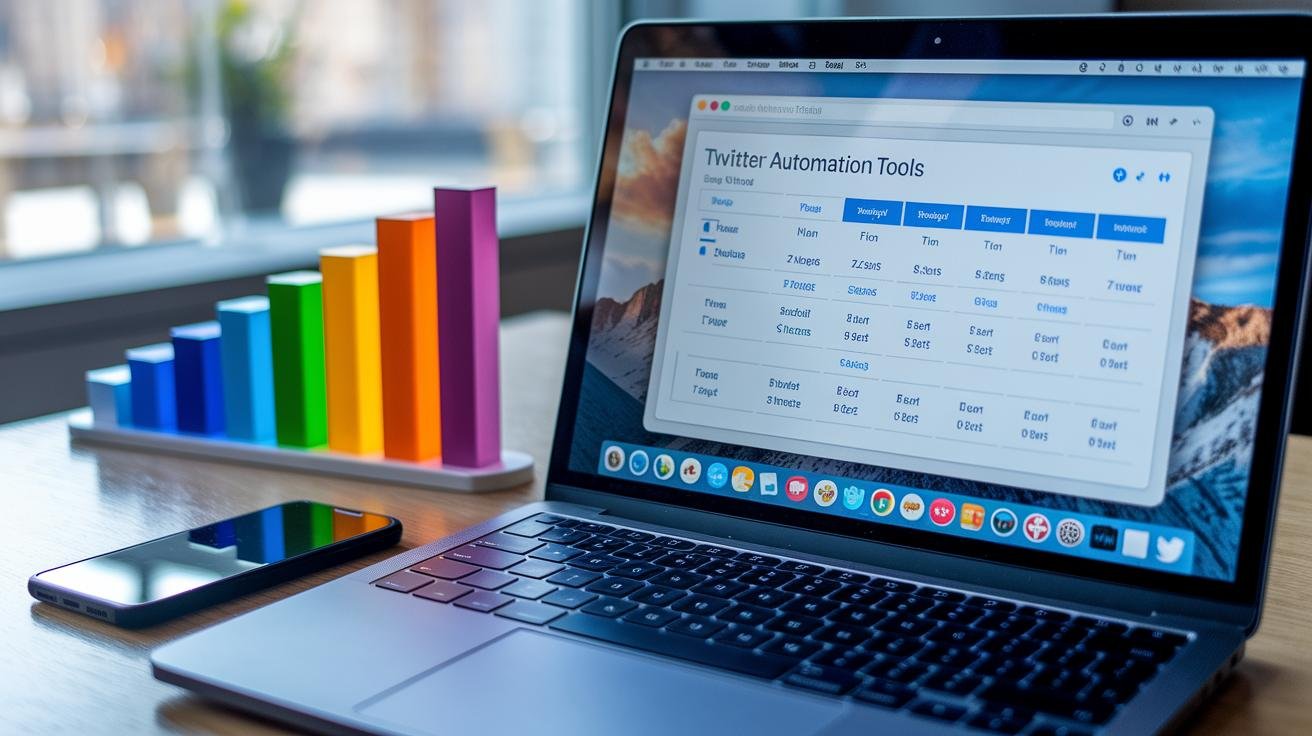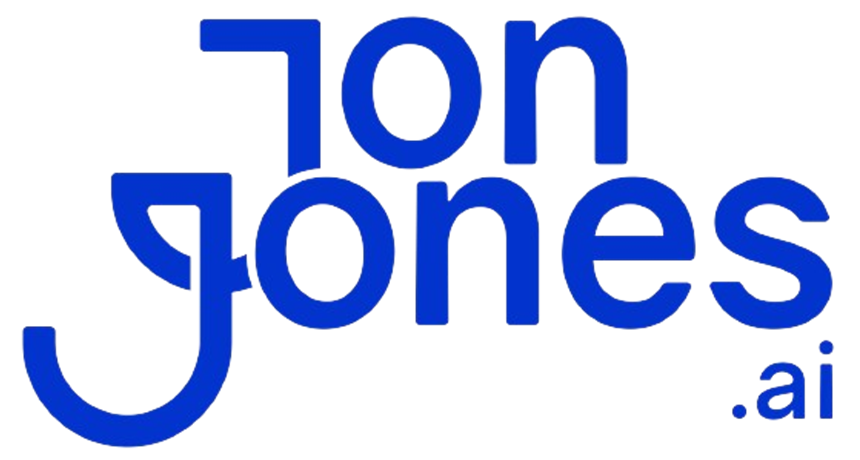Imagine your Twitter account running all day and night, even while you catch some Z’s.
You know how marketers waste hours scheduling tweets, replying by hand, and chasing every fresh trend?
It’s a real time-suck.
But with Twitter automation tools and AI-driven triggers (simple rules that handle your posting), we set up workflows once.
Then it all runs itself.
You’ll free up hours each week and keep your feed buzzing around the clock.
Nice.
In this post, we’ll share 7 Twitter automation tricks to spark big engagement and send your reach through the roof.
Understanding Twitter Automation Basics

Twitter automation uses tools and algorithms (step-by-step instructions) to schedule tweets, reply to messages, and handle other repetitive tasks. We set up your workflows (a set of rules) once, then the software takes over day-to-day posting. No more logging in every hour.
You can also tap into AI (artificial intelligence)–driven triggers that reply to mentions, like posts with key phrases, and keep your account active 24/7. Those rule-based actions make sure you never miss a mention or trending topic, even while you’re off the clock.
- Schedule tweets at the best times
- Auto-reply and like mentions and comments
- Send bulk DMs to over 1,000 followers in seconds
- Auto-retweet, follow/unfollow, and monitor performance live
By handing off these core tasks, you free up hours each week for strategic planning and creative content. Your team focuses on high-impact tweets, while the system keeps a steady publishing rhythm.
Then, with round-the-clock engagement and real-time tracking, you’ll spot trends fast, and tweak your approach on the fly. Results matter.
Key Advantages of Automating Twitter Workflows

Ever spent hours on routine tweets and replies? We’ve been there. That’s why we built automation that takes the copy-paste drudgery off your plate. With built-in timezone scheduling and peak-window learning (a model that spots when followers interact most), your tweets go out at the perfect moment – right when your audience is clicking, liking, and retweeting.
We keep an eye on your profile around the clock, publishing and tracking posts across regions. And our real-time mention flagging pings you about new conversations anywhere in the world – no extra logins or late-night check-ins required.
Our performance dashboard puts clicks, retweets, and thread engagement in one place. You’ll see a clear ROI without juggling multiple tools, so you can spot what’s working and tweak your strategy on the fly.
Analytics & ROI

We watch real-time metrics like follower growth, impressions (how many times a tweet shows up), and engagement rate (the percentage of people who interact with your post). They show us which tweets hit the mark, where readers pause, and if your audience is growing or plateauing. These quick insights also help you spot those spikes after you launch a product or get an influencer shoutout.
Then, we pair that data with Twitter ROI tracking (return on investment, your value vs. spend). You’ll see exactly which conversations drive clicks, sign-ups, or even sales.
Modern tools automate this whole process across all your accounts. They pull stats into live charts on a KPI dashboard (key performance indicator, your performance scorecard) that updates in real time. We tie in UTM tagging (tracking codes in your URLs) and CRM integration (customer relationship management tool) so every click or retweet maps back to website activity and sales leads.
You can schedule these charts to land in your inbox daily, weekly, or monthly, whatever fits your workflow. That keeps everyone aligned on goals. And if a bot starts acting off, posting too fast or following too many accounts, our monitoring alerts you with anomaly flags and logs all the actions for a quick audit trail.
With precise UTM tags and CRM data mapping (linking tweet details to your contact records), you can trace a rise in engagement back to a specific sign-up or sale. Mapping tweet-level info in your CRM helps marketing and sales close the loop faster. Nice.
- Key metrics to watch: follower growth, impressions, engagement rate, click-throughs
- How dashboards and reports work: live charts, custom schedules, email snapshots
- Deep ROI tracking: UTM parameters, CRM data mapping, conversion path analysis
- Bot-action monitoring: rate-limit alerts, anomaly flags, detailed action logs
Comparing Top Twitter Automation Tools

We’ve lined up ten top platforms for tweet scheduling – from free tools to paid services – in our social media automation guide. You’ll see pricing tiers, trial offers, and feature lists made for small marketing teams or solo entrepreneurs. Skim the table to spot the perfect fit for your workflow and budget. Nice.
These tools cover your core needs: advanced analytics, content curation, and audience engagement. Some even use AI (artificial intelligence) to suggest tweets, bulk schedule, or send self-destructing Tweets. Next, check out the table comparing prices and standout features so you can decide fast.
Notice how pricing scales with features. Free schedulers let you start without spending a dime but may cap your posts. Paid plans bring AI-driven suggestions, chatbots, and sentiment analysis (tracking how people feel about your content).
Think about your must-haves: multi-account management, custom reports, or a visual campaign calendar. That clarity helps you pick a platform that fuels growth, not just ticks boxes.
| Tool | Pricing | Key Features |
|---|---|---|
| Sprout Social | 30-day free trial | Sprout Queue; ViralPost timing; Bot Builder; AI Suggested Replies |
| X Pro (TweetDeck) | $8/month | Advanced scheduling; Multi-account; Typeahead search |
| SocialPilot | $30/month; 14-day trial | Bulk uploads (500 Tweets); AI Assistant for ideas & hashtags |
| Agorapulse | $69/month trial | Bulk scheduling (200 Tweets); AI Writing Assistant; Canva AI |
| CoSchedule | Free plan; paid from $19/month | Best Time Scheduler; ReQueue; AI Social Assistant |
| Crowdfire | Free plan; paid from $9.99/month | Content curation; customizable posting; image suggestions |
| SocialBee | $29/month trial | Evergreen resharing; AI tweet & image generator |
| Sendible | $29/month trial | Campaign grouping; hashtag suggestions; automated reporting |
| Keyhole | From $79/month | Data-driven timing; hashtag recommendations; sentiment tracking |
| SocialOomph | Free plan; paid from $15/month | RSS feed triggers; self-destructing Tweets; basic scheduling |
When you choose a tool, start with your must-haves. Do you send a ton of tweets or need bulk uploads? SocialPilot and Agorapulse handle large CSV files and thread scheduling.
Want to start for free? Crowdfire and CoSchedule offer no-cost plans with solid scheduling. Looking for AI-powered ideas and chatbots? Sprout Social’s Bot Builder and ViralPost timing have you covered.
If enterprise analytics are your game, Keyhole shines at tracking hashtags and sentiment. And SocialOomph’s self-destructing Tweets let you send time-limited messages. Match those strengths to your workflow and power your Twitter game without overpaying.
Setting Up Automated Tweet Scheduling

-
Prepare your CSV bulk import
Export your tweet list into a CSV (comma-separated values) file with columns for text, date, and time. Add a “#” column if you want AI-generated hashtags (tags suggested by an AI tool). SocialPilot can handle up to 500 tweets per batch and even recommends tags for you! -
Import into SocialPilot
Head to the scheduler, choose CSV import, and upload your file. We’ll map your columns to tweet text, date, and time, so you automate your Twitter posts in just minutes. You’ll skip manual entry and jump straight to posting. -
Sync your calendar with CoSchedule
Connect your Google or Outlook calendar to CoSchedule. Your tweet slots appear side by side with your meetings, giving you a clear view of your day. Then let ReQueue (CoSchedule’s recycling feature) fill in any gaps with your evergreen posts (content that stays fresh over time). -
Schedule tweet threads in Agorapulse
Open the thread composer and paste in up to 200 tweets at once. Pick the dates and times, and Agorapulse chains them into a neat, scheduled thread. Nice. -
Set up recurring posts in CoSchedule
Select your campaign, enable ReQueue, and set how often you want promos to repeat. Your key messages will loop automatically, no manual tweaks needed. Less work, more consistency. -
Turn on RSS-to-Tweet triggers in SocialOomph
Point SocialOomph at your blog or news feed URL using RSS (Really Simple Syndication). New articles auto-generate tweets on your schedule, so content curation runs itself. Sit back and watch the feed flow.
By combining CSV imports, calendar sync, recurring promos, and RSS triggers, you’ll automate bulk tweeting, threaded posts, and promo loops without lifting a finger. Results matter.
Leveraging Twitter API and Custom Automation

Ever wish you could tweet without lifting a finger? With Twitter API (an interface that lets programs talk to Twitter), we’ll post updates, track mentions, and follow users automatically. But heads up, you’re capped at about 300 Tweets every three hours. Pair that with no-code platforms, and you can spin up a custom setup in minutes. For workflow automation examples, check out how we replace repetitive tasks with seamless flows.
Python Scripting
Let’s kick off with Python:
• Create a virtual environment (a sandbox for your Python projects)
• Install Tweepy (a Python library that chats with Twitter)
• Plug in your API keys, write code to craft a Tweet, and call Twitter’s post endpoint
• Schedule it with cron (a Linux task scheduler) or Task Scheduler (Windows)
Boom, your tweets go live on cue without you logging in.
Zapier Workflows
No code? No problem. Zapier (a no-code tool that links apps) can bridge Google Sheets and Twitter:
• Add a new row in Sheets
• Zapier grabs your text, shortens your links, adds UTM tags, and queues a Tweet
• Test the zap, then switch it on
Now each spreadsheet entry becomes a lined-up Tweet in minutes.
IFTTT Applets
IFTTT (If This Then That) lives in the cloud and watches for triggers like RSS updates:
• Pick or customize an applet that fits your workflow
• Set keyword or hashtag filters to fine-tune what posts go out
• Sit back, IFTTT formats and sends your Tweets on your schedule
No servers. No headaches. Just automated Tweets.
Best Practices and Compliance for Twitter Automation

Before we flip the automation switch, start with social monitoring (tracking mentions, hashtags, and topic trends to understand your audience). This groundwork keeps your bots helpful, not annoying. It’s part of ethical automation.
Automated feeds get stale when you repeat the same old messages. Mix in polls, open-ended questions, and manual shout-outs so your timeline feels human. This variety also helps dodge Twitter’s spam detectors.
Real people don’t tweet like robots on a fixed schedule. We add random delays and varied time gaps between actions to mimic real scrolling. Watch your rate limits (Twitter caps actions per hour) and use exponential backoff (increasing wait times after each retry) so you don’t hit error blocks.
You need solid security too. Enable two-factor authentication (2FA) and keep detailed audit logs of every bot action. That way, if anything misfires, you can trace it and revoke permissions fast. It protects your brand and your followers’ trust.
We always follow Twitter’s automation rules to avoid suspensions. Implement anti-spam filters and add a quick manual review step for outgoing DMs or bulk posts. Regularly audit your workflows and pause any feature that risks exceeding content or interaction limits. Your brand reputation depends on it.
Real-World Twitter Automation Use Cases

Ever wondered how Twitter automation (tools that schedule tweets and replies on their own) plays out in real campaigns? We pulled three real stories, from a small business to an enterprise and a startup, to show you the actual wins you can expect.
| Business Type | Tool | Outcome |
|---|---|---|
| Small Business (SMB) | Sprout Social | 25% bump in engagement using scheduled posts and AI-powered replies (responses crafted by artificial intelligence) |
| Enterprise | Keyhole | 40% faster response time with sentiment-based triggers during a product launch |
| Startup | SocialPilot | 1,000 new followers in two weeks via CSV bulk import (CSV stands for comma-separated values) for holiday campaigns |
Final Words
We’ve mapped out the ABCs of scheduling, replying, and tracking with tools that post at peak times and free you from manual work.
We outlined time savings, real-time insights, tool matchups, hands-on setup tips, API hacks, safety steps, and proof from real brands.
Now it’s your turn to put twitter automation to work for your biz. With these tips, you’ll boost consistency and reclaim hours each week.
Keep experimenting, you’re on track for smarter growth.
FAQ
What are Twitter automation tools and apps?
Twitter automation tools and apps are software solutions that schedule tweets, automate follows and unfollows, manage engagement, and analyze performance, helping you post consistently and free up time for strategic tasks.
How do Twitter automation bots work?
Twitter automation bots work by using algorithms and APIs (application programming interfaces) to automatically send tweets, like posts, follow accounts, and reply to mentions based on rules you set, maintaining engagement without manual effort.
Are there free Twitter automation tools?
Free Twitter automation tools offer basic scheduling, posting, and limited engagement features at no cost, like TweetDeck or SocialOomph’s free plan, helping you automate simple tasks before scaling to paid tiers.
How do I find a Twitter automation tutorial?
A Twitter automation tutorial explains setup and workflow for tools like TweetDeck, Zapier, or Python scripts, walking you through API key configuration, scheduling posts, and basic automations step by step.
How can I use Twitter automation on GitHub?
GitHub hosts open-source Twitter automation scripts and bots, often written in Python or Node.js, where you clone a repository, configure API keys, then run or customize code for scheduling and engagement.
Does X (formerly Twitter) support native automation features?
X (formerly Twitter) supports native scheduling via TweetDeck or the Ads interface, letting you plan posts in advance, but it does not allow fully automated direct messages or follows without third-party tools due to API limits.






